New Acquisitions - Contemporary ANZAC Day Photographs
By JOL Admin | 7 October 2014
"The weather was hot and the flies pestilential. When anyone speaks to you of the glory of war, picture to yourself a narrow line of trenches two and sometimes three deep with bodies (and think too of your best friends, for that is what these boys become by long association with you) mangled and torn beyond description by the bombs, and bloated and blackened by decay and crawling with maggots. Live amongst this for days …This is war and such is glory—whatever the novelists may say." - Harold Edward (Pompey) Elliott (soldier, lawyer, politician)
"All the uncertainties of change in time and the tragedy of loss associated with the past find in the ruin a coherent and unified expression." - Georg Simmel (1)
The relationship between war and honour is a difficult one – replete with tensions and contradictions. Yet commemorating war dead is a long held practice in the history of the world so long driven to war.
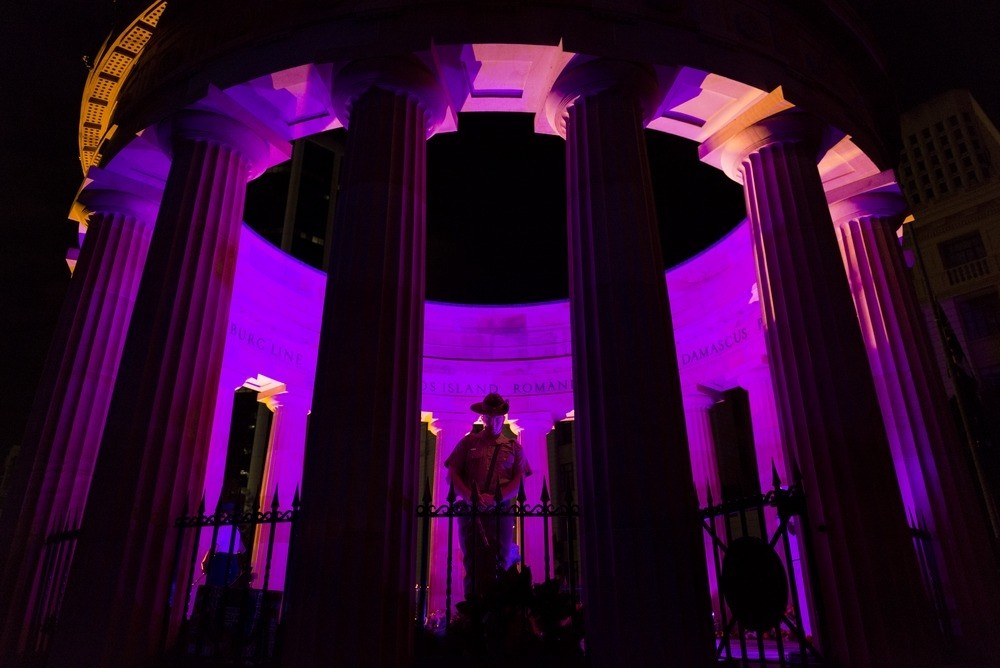
Shrine of Remembrance bathed in purple light at the Anzac Day dawn service in Brisbane Queensland 2014
There was evidence, for example, in Ancient Athens of public memorials inscribed with the names of the dead. Although listed by year and sometimes by campaign, the names bore no other status but that they were Athenian citizens.
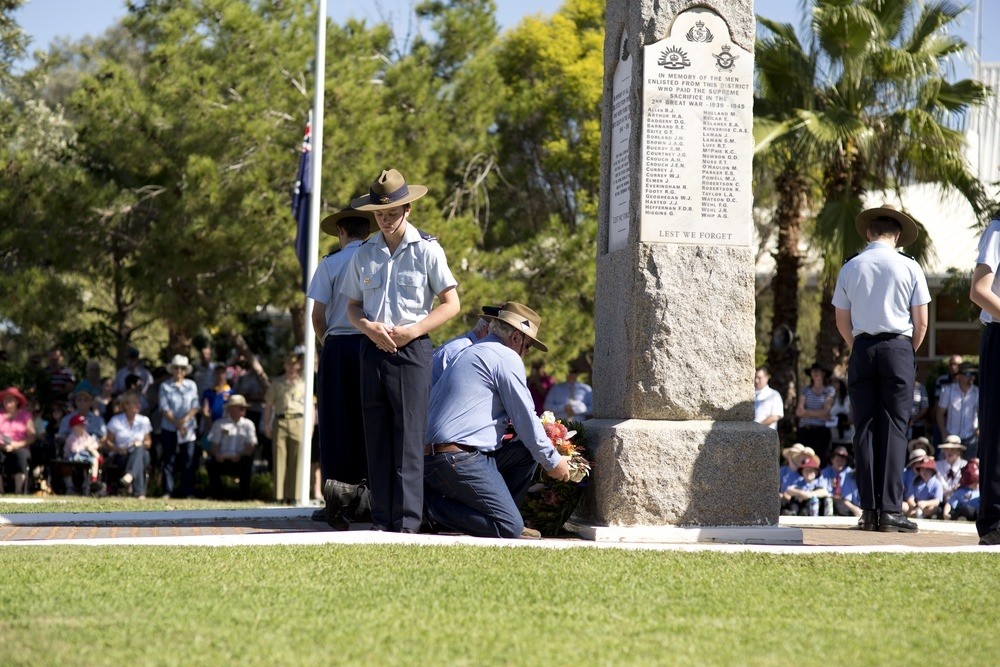
Veterans laying wreaths at the cenotaph during the Anzac Day service in Roma Queensland 2014
So why do we remember? Winter suggests that one reason "why so many choose to do the work of remembrance lies in the subject of war and its aftermath" and "the desire to recapture the profile and to keep the name of those who, because of war, are no longer there. Remembrance is an act of symbolic exchange between those who remain and those who suffered or died. They went through much; they lost or gave much; we give the little we can—starting with recognition and acknowledgement, and then moving on, at times, to material expressions of both" (p.279).(2)
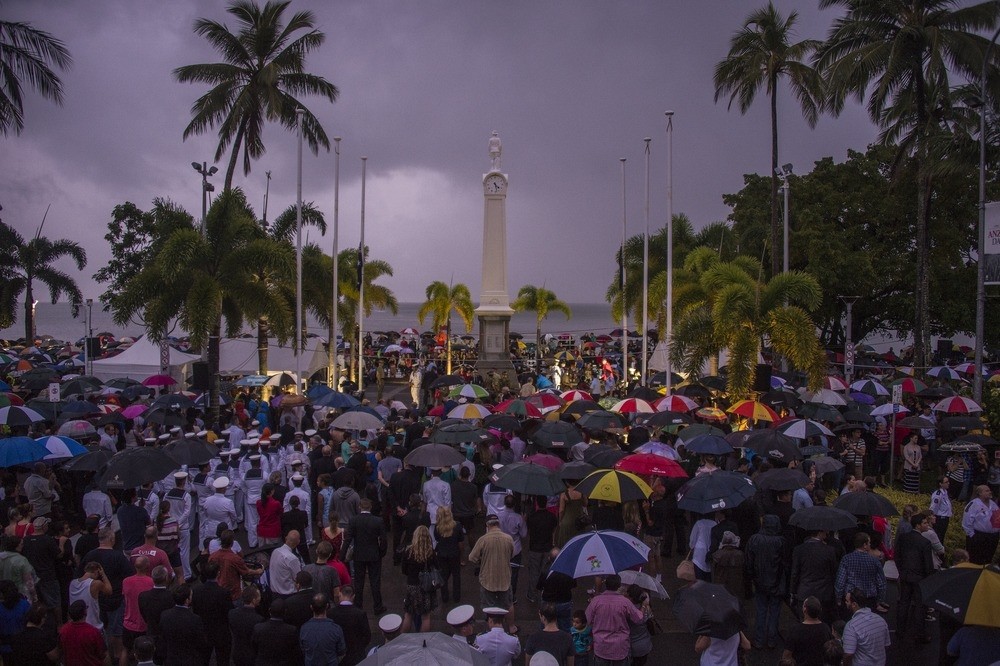
Large crowd gathers around the cenotaph at the Anzac Day dawn service in Cairns Queensland 2014
These material expressions are often found through commemorative rituals - with these rituals being defined by but also redefining the identity of national communities. In Australia and New Zealand, ANZAC day marks one of our most significant days of commemoration; remembering our war dead, the sacrifice in war, and the courage of those under fire.
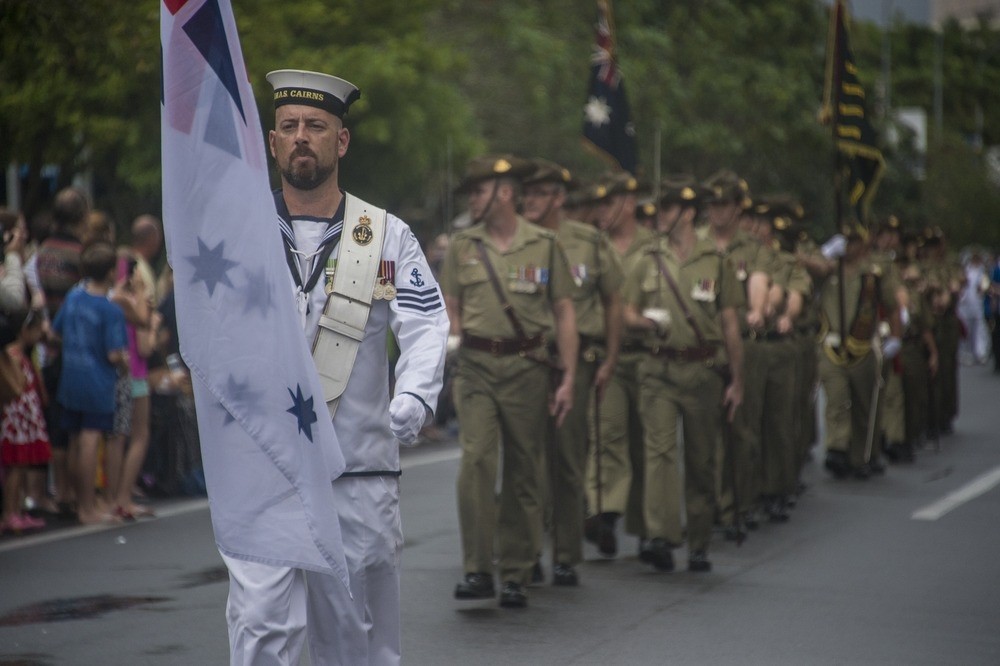
Navy officer carrying the Australian White Ensign during the Anzac Day march in Cairns Queensland 2014
Although it has been argued that the idea of "the digger" has diminished in "contemporary understandings of Australian national identity" (p.167) Tranter and Donoghue found that ANZACs continued to be "a substantial component of Australian identity"(p.177).(3) The concepts of mateship, endurance, courage, ingenuity and good humour, epitomised by the diggers, has survived into contemporary Australia.
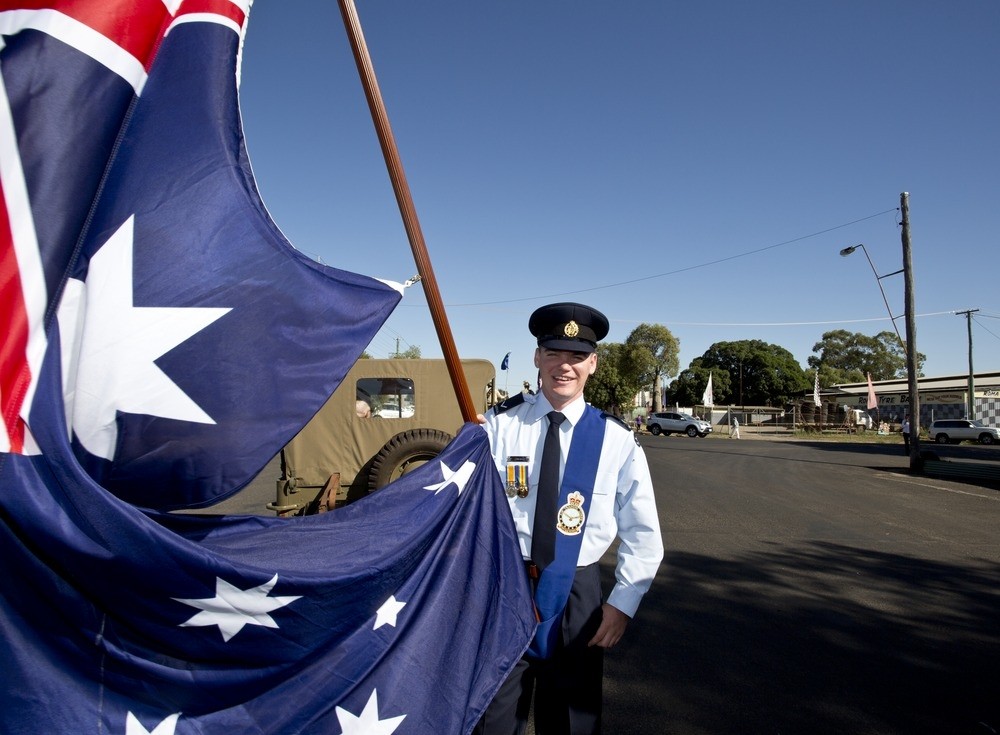
Member of the Air Training Corps bearing the Australian flag during the Anzac Day march in Roma Queensland 2014
Why is this the case? Ernest Renan contemplated in 1882 in his speech about "the nation" that: "A nation is a soul, a spiritual principle. Two things which, properly speaking, are really one and the same constitute this soul, this spiritual principle. One is the past, the other is the present. One is the possession in common of a rich legacy of memories; the other is present consent, the desire to live together, the desire to continue to invest in the heritage that we have jointly received.... The nation, like the individual, is the outcome of a long past of efforts, sacrifices, and devotions. Of all cults, that of the ancestors is the most legitimate: our ancestors have made us what we are. A heroic past with great men and glory (I mean true glory) is the social capital upon which the national idea rests". (4) This is clearly still the case.
Panorama of the Anzac Day dawn service in Brisbane Queensland 2014
ANZAC Day, through attendance at dawn services and veterans' marches, continues to draw crowds in acts of personal and collective remembrance and in Queensland this continues to play out throughout our entire State. To this end, we commissioned a group of wonderful photographers to record a contemporary expression of a long held tradition:
- Photographer Brian Cassey took images of ANZAC Day in Cairns - 29485 Brian Cassey Anzac Day Photographs 2014 (link to the record and the item);
- Photographer Brian Rogers took images of ANZAC Day in Roma and Muckadilla - Brian Rogers Anzac Day Photographs 2014 (link to the record and link to the item); and
- Photographers Kelly Hussey-Smith and Alan Hill took images at the Shrine of Remembrance in Brisbane - Kelly Hussey-Smith and Alan Hill Anzac Day Photographs 2014 (link to the record and link to the item).
We also acquired photographs from Hamish Cairns - Hamish Cairns Anzac Day Photographs 2014 (link to the record and link to the item)
Queenslanders continue to remember around the shrines of remembrance and the eternal flame, standing to, at dawn.
Lest we Forget.
Zenovia Pappas – Contemporary Collecting Coordinator, State Library of Queensland
__________________
References
(1) quoted in "Social Memory Studies: From "Collective Memory" to the Historical Sociology of Mnemonic Practices" Jeffrey K. Olick and Joyce Robbins Annual Review of Sociology, Vol. 24, (1998), pp. 105-140, p.107.
(2) J. M. Winter 2006, Remembering war the Great War between memory and history in the twentieth century, New Haven, CT Yale University Press.
(3) B. Tranter, and J. Donoghue, "Colonial and post-colonial aspects of Australian identity". The British Journal of Sociology, Vol. 58, (2007) pp.165-183.
(4) Ernest Renan, “What is a Nation?”, text of a conference delivered at the Sorbonne on March 11th, 1882, in Ernest Renan, Qu’est-ce qu’une nation?, Paris, Presses-Pocket, 1992. (translated by Ethan Rundell)
Comments
Your email address will not be published.
We welcome relevant, respectful comments.